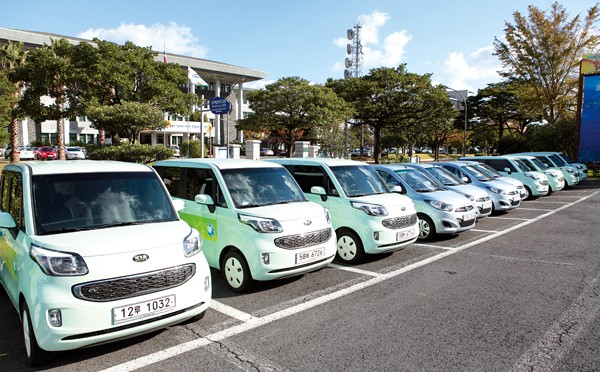A new study suggests that electric vehicles with rechargeable batteries offer a more affordable way to reduce carbon dioxide emissions than those with fuel cells that convert hydrogen gas into clean electricity.
Published in the November issue of the journal Energy, the study by researchers at Stanford University in the United States and the Technical University of Munich (TUM) in Germany focused on California, where battery electric cars are growing in popularity while only a few manufacturers have begun offering fuel cell vehicles.
The researchers created future scenarios for the town of Los Altos Hills, an affluent community of about 8,000 residents near the Stanford campus. “Los Altos Hills is distinguished by an unusually high solar-generation capacity … with the highest share of electric vehicles in the state,” said lead author Markus Felgenhauer, a doctoral candidate at TUM and former visiting scholar at the Stanford Global Climate and Energy Project (GCEP).
Looking 10 to 20 years into the future, when battery and fuel cell vehicles are expected to be in much wider use, and when solar power and electrolyzers are cost competitive with the electric grid, one of the scenarios for the year 2035 assumed that electric vehicles would constitute 38 percent of the town’s vehicle fleet, and that fuel cell vehicles would be powered by locally produced hydrogen made with the cheapest available electricity, be it solar generated or obtained from the grid.
“We provided data on the amount of energy Los Altos Hills needs throughout the day, as well as financial data on the cost of building new energy infrastructures,” study co-author Matthew Pellow, a former GCEP postdoctoral scholar now with the Electric Power Research Institute, was quoted as saying in a news release from Stanford. “We included the cost of making solar panels, electrolyzers, batteries and everything else. Then we told the model, given our scenario for 2035, tell us the most economical way to meet the total energy demand of the community.”
For what Pellow claimed to be “data-driven analysis,” the data about Los Altos Hills was fed to a computational model developed by study co-author Thomas Hamacher, a professor of electrical and computer engineering at TUM.
“We looked at how large-scale adoption of electric vehicles would affect total energy use in a community, for buildings as well as transportation,” Felgenhauer said. “We found that investing in all-electric battery vehicles is a more economical choice for reducing carbon dioxide emissions, primarily due to their lower cost and significantly higher energy efficiency.”
“In terms of overall costs, we found that battery electric vehicles are better than fuel cell vehicles for reducing emissions,” he said. “The analysis showed that to be cost competitive, fuel cell vehicles would have to be priced much lower than battery vehicles. However, fuel cell vehicles are likely to be significantly more expensive than battery vehicles for the foreseeable future. Another supposed benefit of hydrogen — storing surplus solar energy — didn’t pan out in our analysis either. We found that in 2035, only a small amount of solar hydrogen storage would be used for heating and lighting buildings.”
Acknowledging that the study was about one San Francisco Bay Area town, the authors believe the results are relevant for many bedroom communities with ample sunlight across California. They hope to analyze larger networks of communities in future studies and examine other factors that could influence consumers’ choices when deciding whether to buy a battery or fuel cell car.



